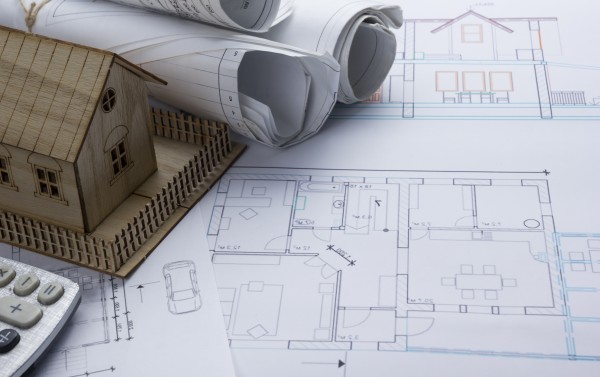Five tasks to complete before buying a plot
1. Going underground
You really need to find out what is going on underground before you commit to buying your self-build plot. If you don’t, you could be hit with unexpected costs due to soil contamination or other unpleasant and costly discoveries. It’s true that you never really know what your project will cost until you’re out of the ground. Many self-build projects have been hit with unexpected expenses because of buried pipes, soil contamination or other unknown nasties under the surface. Get a clear idea of what foundations are needed and how you will bring services to site and the costs involved. Start by chatting to your utility company or commission a soil survey to get to the bottom of it all.
Finding a building plot can be tricky - read our tips to help you identify the ideal plot here.

2. Start research on your insurance policy
Start researching insurance. If you need to take out a self-build mortgage to fund your project, your mortgage provider may stipulate that you need self-build insurance before you can borrow money. This helps to protect the money they lend you for building. Self-build home insurance covers you as the employer of the project, your workers, your land, your materials, and any damage to the home you’re building. Site insurance should be in place from the moment you exchange contracts on the plot or property you are about to start work on.
Learn more about the types of insurance you need when self-building in our blog.
3. Everybody needs good neighbours
Before you commit to anything do consult your potential neighbours. Explain what your plans are and try to reassure them if they seem alarmed. They won’t be fond of the idea of a noisy construction site next door plus they will be your future neighbours so it’s best to start off on the right foot.
4. Self-build project management
It’s worth establishing at this point which parts of self-build project management you want to, or can feasibly take on. Whether it’s plastering all the walls or fitting the insulation or painting and decorating at the latter stages – think about what you can realistically achieve from the outset. It can help you to gain an idea of costs involved, plan ahead and help to set your budget.
Self-builder Chris Plummer explains: “We employed individuals and managed them – we were fortunate enough to have found roofers, carpenters and my dad was a great help throughout the process. I actually learnt a lot of basic wiring and some plumbing. I even learnt a bit about carpentry and roofing. It has been a real learning curve.”
Find out more about Chris's self-build journey in our case study.
Learn more about the different options for managing your self-build here.

5. Start gathering quotes
Soon you’ll find your to-do list mounting so start researching potential suppliers for your self-build materials and the contractors you’d like to work with. This can be quite time consuming so getting your foot in the door, so to speak, will help move things along.
Second-time self-builder James Mason says: “I’m on the lookout for tradespeople and it hasn’t been easy. I’ve discovered that day rates wildly fluctuate so it can take time to find the right people for the jobs. I’ve sourced a plumber and am just awaiting his final quote. Thankfully, I am using the same reliable builder who built my first house.”
You can find out more about James's self-build home in our case study, and follow his journey to build his second self-build in our blog series.

Obtaining outline planning permission
Find out everything you need to know about outline planning permission

Surveys and checks you need to complete before building commences
Learn more about what's required before you start your build